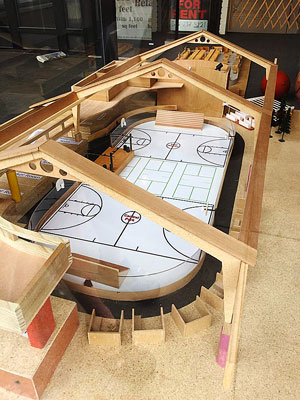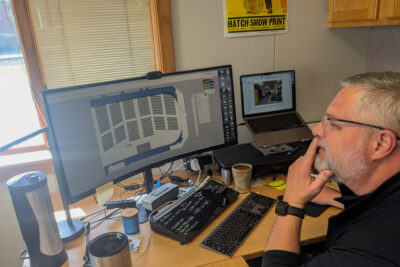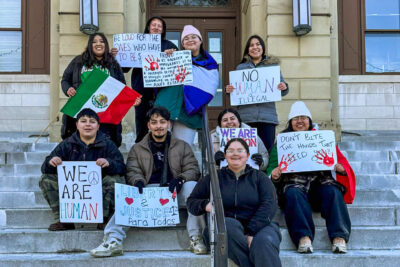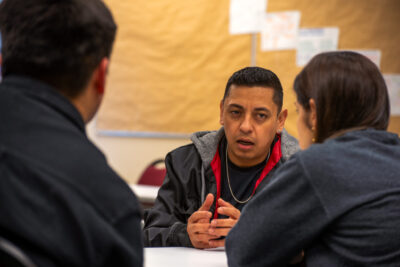Live music, car shows, ice skating, basketball and more could all be possible in Goshen, if funding is secured for a multipurpose activities center known preemptively as “Central Park Goshen.”
The park project is receiving enthusiastic support from downtown business owners and Goshen College students alike, despite the continued financial challenges.In November, the city will learn whether the park project will receive a $1 million endowment from the Regional Cities Initiative, which could influence other donors.
For nearly 10 years, the idea of some recreational hub for Goshen has bounced around the minds of Victor Koop, a former Goshen College professor, and David Pottinger, a Goshen developer and landlord.
Originally, Koop had imagined the development of a Goshen ice skating rink. He researched costs, locations and demand for the rink, while Pottinger had advocated for an outdoor amphitheater.
Jonathan Wieand, the owner of Tax Solutions in Goshen, also expressed interest in the idea of a new activity center. Wieand suggested that the three men put their ideas together and propose one multi-purpose activity center.
Wieand hopes a park would draw youth of the community “away from screens to do something physically active with other youth and adults.”
One anonymous donor has already pledged $50,000, and the Goshen Kiwanis Foundation made a $1,000 pledge. But that’s far from what they need for the total cost of the project which is estimated to be $4 million.
Wieand explained that receiving funding from the Regional Cities Grant, a state development initiative, could make the Elkhart County Community Foundation more inclined to fund the project as well.
“Other potential donors may wait and see, depending on the results of those two grant requests,” Wieand said.
According to Wieand, Goshen community members could help this project in several ways, primarily by spreading the word. This could include “liking” the Central Park Goshen Facebook page, sharing information with those willing to provide funding or volunteering to help with construction.
One early advocate is Steve Martin, the owner of Ignition Music Garage, which doubles as a record store and concert venue in downtown Goshen.
Martin said, “Goshen’s authentic downtown businesses already draw people to events like First Fridays.” Adding a central park, he said, will “define the whole area.”
Martin reflected on what this possible new amphitheater inside the venue could mean for live music in Goshen, saying that it all depends on how many people are willing to pay to see live music. The most important factor in that will be whether “millennials decide what we are going to program.”
The concerts would be able to hold approximately 2,200 attendants under the roof of the open-air facility. Many more concert goers could set up blankets and lawn chairs in the adjacent lawn.
Jose Chiquito, a Goshen College first-year, who has lived in Goshen all his life, said that he would like to see “live entertainment opportunities, especially for teens.”
“I would like to go to the concerts,” Chiquito said, “especially if they are bigger and can bring more well-known artists.”
He also noted the economic impact of a new park in Goshen.
“[Central Park Goshen] would definitely be a boost in our tourist economy,” Chiquito said, explaining that it would bring people from outside of Goshen and expand on First Friday’s events.
“I know Goshen is very supportive of any kind of endeavor like this,” he said. But Chiquito has some concern about the activities center causing excitement at the beginning, but then people losing interest once it is no longer new.
Christi Sessa, a sophomore, said Central Park Goshen would complement other centralized spaces like Shanklin Park, where, she said, “When it is not the summer, it is kind of dead.”
In contrast, she said, “[Central Park Goshen] could be a space that is used all year round.”
Sessa focused on the idea of bringing the various close-knit neighborhoods of Goshen together in order to get to know and interact with each other.
Both Chiquito and Sessa made clear their willingness to spread the word using different strategies. Sessa expressed interest in advertising, using the example of free T-shirts in order to get more people talking about the project, and Chiquito stands behind the idea of community members volunteering and getting involved in the process of construction.
Whether it be bringing together people of different musical tastes to the same concerts, families living in different neighborhoods or teens who have shared interests, Wieand said the goal is “to provide year-round recreation alternatives for the youth of the community.”



